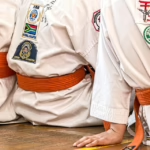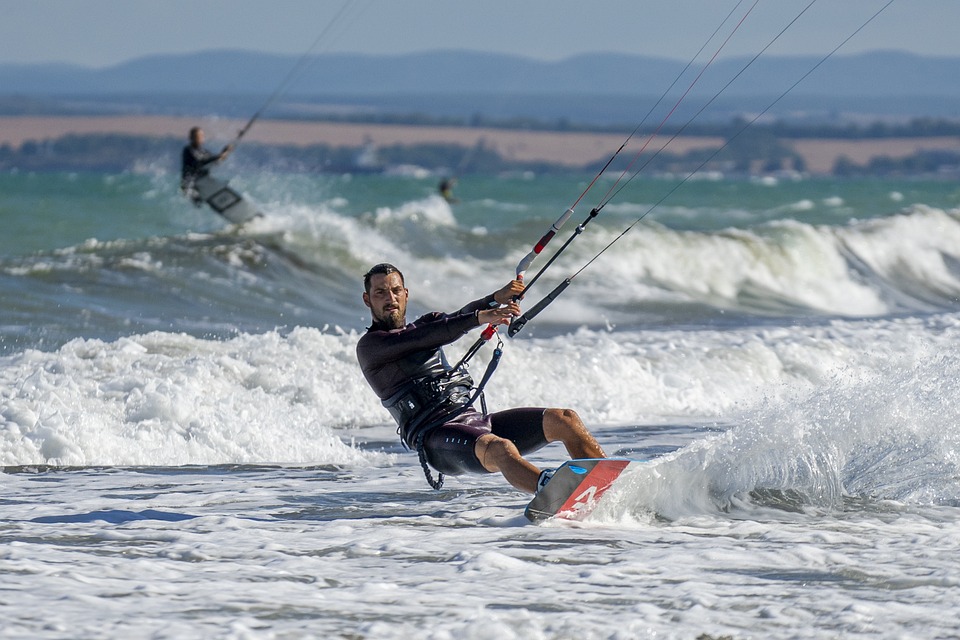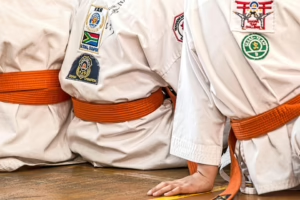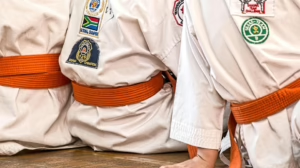Community Spotlight: How Local Troupes are Reviving Acrobatic Arts
Introduction
The world of acrobatics has long captivated audiences with its blend of strength, agility, and artistry. Historically embedded in various cultures, acrobatic arts have evolved into a multifaceted discipline, encompassing circus skills, dance, and performance art. Recently, there has been a notable resurgence in local acrobatic troupes across the globe, with communities coming together to revive and celebrate this exhilarating art form. This article explores how these local groups are pushing the revival of acrobatic arts, examining their significance, methodologies, and impact on community engagement and cultural identity.
The Origins of Acrobatic Arts
Acrobatics has roots stretching back thousands of years, with evidence of acrobatic performances dating as far back as ancient Egypt. These early forms of acrobatics celebrated not only physical prowess but also storytelling, often linked to religious or cultural narratives. By the time of the Roman Empire, acrobatics had evolved significantly, incorporating elements of theater and dance.
Over the centuries, acrobatics found its place in various entertainment sectors, including circuses and street performances, adapting to cultural nuances and local traditions. However, the rise of modern entertainment and digital media saw a decline in grassroots acrobatic performances. Today’s local troupes are stepping in to fill this void, offering a fresh voice in a richly storied tradition.
The Revival of Local Troupes
Grassroots Movements
The revival of acrobatic arts is largely credited to grassroots movements that prioritize community participation and education. Local troupes often begin as small collectives of enthusiastic individuals who share a passion for movement, expression, and storytelling. These groups typically function as non-profit organizations, focusing on making acrobatics accessible to the wider community.
The key to their success lies in fostering an inclusive atmosphere where individuals of all ages and backgrounds can partake in learning and performing acrobatic arts. Programs often range from introductory classes to advanced workshops, targeting diverse skill levels and interests. Such accessibility democratizes the art form, encouraging participation from individuals who may not have otherwise explored acrobatics.
Importance of Community Engagement
Many local troupes deploy a unique approach that emphasizes community engagement. This commitment manifests in various ways, including hosting seasonal performances that showcase local talent, organizing community outreach programs, or collaborating with schools to integrate acrobatics into their physical education curriculum. The emphasis on community not only fosters a sense of belonging among participants but also nurtures local pride and cultural collaboration.
In cities like Portland, Oregon, and Asheville, North Carolina, local acrobatic troupes have emerged as cultural hubs, drawing diverse participants and audiences alike. These communities often host annual festivals featuring acrobatic performances, workshops, and collaborations with other art forms, reinforcing the concept that acrobatics can be a vehicle for cultural expression and social cohesion.
Techniques and Training Methods
Traditional Vs. Contemporary Approaches
The revival of acrobatic arts has also led to a blending of traditional and contemporary techniques. Traditional forms often focus on the foundational skills of balancing, tumbling, and aerial work, drawing from a rich history of movement practice. Troupes that emphasize traditional methods often explore the cultural history behind each skill, teaching students not just how to perform but also the stories and significance woven into their movements.
Conversely, contemporary approaches to acrobatics frequently incorporate elements from modern dance, theater, and even physical theatre. This fusion creates a dynamic form that appeals to broader audiences and encourages creative expression. Many local troupes engage in cross-disciplinary collaborations, partnering with dancers, musicians, and visual artists to reinvent their performances continually.
The Role of Training Facilities
The establishment of dedicated training spaces has also facilitated the growth of local troupes. Various studios across urban and rural locations offer specialized training in acrobatics, ensuring quality instruction and safety for practitioners. These facilities create a nurturing environment where aspiring acrobats can hone their skills under experienced mentorship.
In addition to physical training spaces, many troupes utilize digital platforms to offer virtual instruction and support, particularly valuable in today’s rapidly shifting landscape. Through online tutorials and classes, these local groups can reach participants far beyond their geographical confines, expanding their community outreach and engagement.
Challenges Faced by Local Troupes
Funding and Resources
One of the primary challenges local troupes face is securing funding and resources. Operating as non-profit organizations often means that they rely heavily on community support, grants, and donations to sustain their activities. The economic landscape can impact their ability to hire skilled instructors, maintain facilities, and fund performances.
However, many troupes are creatively navigating these challenges, partnering with local businesses for sponsorship opportunities or organizing fundraising events to generate income. Additionally, grant-writing initiatives targeted at the arts help provide financial assistance for creative projects and educational programs, thereby securing their sustainability.
Balancing Skill Development and Performance Pressure
Another challenge local troupes encounter is balancing skill development with performance pressure. While regular participation in shows can build confidence and performance skills, it can also lead to burnout among performers. Striking a healthy equilibrium becomes crucial, especially for younger participants who may be eager to showcase their talent but still need room for growth. Troupes that prioritize skill development and celebrate progress, irrespective of performance, contribute to a more sustainable and enjoyable learning environment.
Success Stories from Local Troupes
The Circus Project (Portland, OR)
The Circus Project in Portland stands out as a poignant case study of how a local troupe can foster community engagement and personal growth through acrobatic arts. Founded in 2008, the organization has developed a robust outreach program aimed at supporting at-risk youth. Participants are encouraged to explore their creative potential through aerial arts, acrobatics, and performance.
The Circus Project also operates an inclusive training program that assists individuals with disabilities, reinforcing the idea that acrobatics is for everyone. Their emphasis on personal narratives and empowerment has earned them a loyal following, and their performances showcase the range of experiences and stories within the community.
Asheville Aerial Arts (Asheville, NC)
Asheville Aerial Arts is another exemplary local troupe that marries acrobatic artistry with environmental consciousness. They focus on sustainable practices, often integrating themes of nature and community resilience into their performances. Their work emphasizes the importance of protecting natural spaces while celebrating personal expression through movement.
Beyond regular training, Asheville Aerial Arts often collaborates with local environmental groups to raise awareness and funds for conservation initiatives. This unique blend of acrobatics and activism amplifies their impact and connects participants with larger societal issues while celebrating the beauty of acrobatic arts.
The Impact of Revived Acrobatic Arts
Cultural Identity
The revival of acrobatic arts through local troupes contributes significantly to the preservation and celebration of cultural identity. By integrating traditional elements into contemporary performances, these groups honor their cultural history while creating a platform for storytelling that resonates with modern audiences. Local performances often draw upon community narratives, reclaiming the power of cultural expression and ensuring its relevance for future generations.
Social Impact
Furthermore, the social impact of community-based acrobatic troupes is profound. Participation in acrobatic arts promotes physical health, encourages teamwork, and fosters resilience among community members. Classes and workshops build social bonds and provide a supportive network, which can be particularly valuable in urban environments where social isolation is a challenge. The sense of belonging nurtured within these groups contributes to overall well-being and mental health, proving that the benefits of acrobatic arts extend far beyond physical prowess.
Educational Influence
Many local troupes have also started educational outreach programs, working with schools to integrate acrobatic arts into the standard curriculum. This educational influence broadens students’ horizons, introducing them to alternative forms of discipline and teamwork while cultivating creativity. By encouraging young individuals to explore movement in a supportive environment, these programs foster lifelong engagement with the arts, inspiring the next generation of performers.
Future Prospects for Local Troupes
Continued Engagement and Innovation
Local troupes will likely continue to flourish as they adapt to the ever-changing social and cultural landscape. Future successes will depend on their ability to engage with communities meaningfully, leveraging technology and social media for outreach and connection. Innovations in performance styles, training, and collaborations can expand the reach and impact of these groups.
Global Connections
Additionally, as communities become more interconnected globally, local troupes may benefit from international collaboration, inviting foreign artists to share their skills and perspectives. Such exchanges not only enrich the local acrobatic landscape but simultaneously foster a sense of global unity within the acrobatic community.
Conclusion
The revival of acrobatic arts through local troupes represents a vital intersection of culture, community, and creativity. By embracing inclusivity and accessibility, these groups foster engagement and nurture a deep appreciation for the expressive possibilities of movement. The journey of local troupes in reviving acrobatic arts serves as an inspiring testament to the enduring power of community, creativity, and collaboration in preserving and redefining a cherished art form for generations to come.
References
- "Acrobatics in Ancient Civilizations: A Historical Overview." Journal of Cultural History, 2020.
- "Reviving Circus Arts: Community Engagement through Performance." Community Arts Journal, 2021.
- "The Role of Non-Profits in Arts Education." Arts Management Review, 2022.
- "Grassroots Movements in the Arts: The Case of Local Troupes." Journal of Arts and Community, 2023.
- "Physical Theatre: Merging Acrobatic Arts with Modern Dance." Contemporary Performance Studies, 2023.
- "Social and Economic Impacts of Local Arts Organizations." William & Mary Review of Arts and Culture, 2023.
- "The Importance of Aerial Work in Modern Acrobatics." International Acrobatics Association Journal, 2022.


























Add Comment